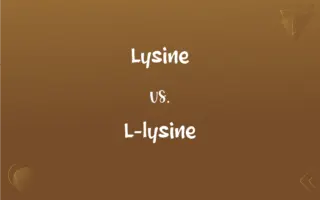Tension vs. Compression: What's the Difference?
Edited by Aimie Carlson || By Harlon Moss || Updated on October 9, 2023
Tension refers to the force pulling materials apart, while compression is the force pushing materials together.

Key Differences
Tension is a force that acts to expand or lengthen an object. On the contrary, compression is a force that acts to shorten or compress an object.
In structures like bridges, tension often operates where materials are stretched. In contrast, compression acts where materials are pushed together, such as the pillars supporting a bridge.
If you imagine a rubber band being stretched, it experiences tension across its length. Conversely, if you think of a spring being pushed down, it undergoes compression.
Ropes and cables in machinery or construction typically experience tension as they support loads. In contrast, columns and struts primarily bear compressive forces.
Materials used in construction need to withstand forces of tension and compression. While steel cables are good at handling tension, concrete blocks excel under compression.
ADVERTISEMENT
Comparison Chart
Direction of Force
Pulls materials apart.
Pushes materials together.
Action on Materials
Expands or lengthens.
Shortens or compresses.
Common Applications
Ropes, cables in bridges and machinery.
Columns, struts, and pillars in buildings.
Response in Materials
Stretched or elongated.
Compacted or reduced in size.
Structural Behavior
Results in elongation.
Results in shortening.
ADVERTISEMENT
Tension and Compression Definitions
Tension
Tension is the force that stretches or elongates a material.
When pulling a rubber band, it undergoes tension.
Compression
Compression acts to compact or reduce the size of a substance.
Stacking books on a cardboard box causes compression of the box.
Tension
Tension is the opposite of compression.
The tension in the bridge's cables counteracts the compression in its pillars.
Compression
Compression is the opposite of tension.
The columns of a building are under compression due to the building's weight.
Tension
Tension is experienced in materials under pull.
A tug-of-war rope experiences tension from both teams pulling.
Compression
Compression is the force that pushes materials together.
Pressing a spring applies compression to it.
Tension
Tension can cause materials to fail if excessive.
Too much tension on a wire can cause it to snap.
Compression
Compression is experienced in materials under push.
The base of a dam experiences compression from the water it holds back.
Tension
Tension acts to pull substances apart.
The tension in a stretched string increases as you pull harder.
Compression
Compression can cause materials to buckle or collapse if excessive.
Overloading a shelf with books may cause it to fail under compression.
Tension
The act or process of stretching something tight.
Compression
The act or process of compressing.
FAQs
What does tension refer to in physics?
Tension refers to the force that stretches or elongates a material.
What type of force is experienced by a compressed spring?
A compressed spring experiences compression.
What happens to materials under excessive compression?
Materials under excessive compression may buckle or collapse.
What happens when tension and compression are balanced in a structure?
When balanced, a structure remains stable and retains its shape.
What kind of force does a pulled rubber band experience?
A pulled rubber band experiences tension.
Which is more prevalent in the Earth's crust, tension or compression?
Both tension and compression occur in the Earth's crust due to tectonic forces, with their prevalence depending on the specific region and its geological activities.
How does compression affect objects?
Compression pushes materials together, compacting or reducing their size.
Are tension and compression opposite forces?
Yes, tension pulls materials apart while compression pushes them together.
How does tension affect a material's length?
Tension acts to increase a material's length by stretching it.
Do ropes in pulley systems experience tension or compression?
Ropes in pulley systems experience tension.
Which material is good at withstanding compression?
Concrete is particularly good at withstanding compressive forces.
Can compression make materials denser?
Yes, compression can increase the density of materials by pushing particles closer together.
How do tension and compression play a role in arch bridges?
In arch bridges, the arch experiences compression, while the cables or ties experience tension.
Is a squeezed sponge under tension or compression?
A squeezed sponge is under compression.
In which structure can you typically find tension?
Tension is commonly found in ropes and cables, such as those in bridges.
Where is compression typically observed?
Compression is often observed in columns, struts, and pillars supporting weight.
How is tension created in a guitar string?
Tension is created in a guitar string when it's stretched tightly.
How do materials react under tension?
Materials under tension tend to stretch or elongate.
Can both tension and compression be present in a single structure?
Yes, many structures, like bridges, experience both tension in some parts and compression in others.
Can materials break under too much tension?
Yes, excessive tension can cause materials to snap or break.
About Author
Written by
Harlon MossHarlon is a seasoned quality moderator and accomplished content writer for Difference Wiki. An alumnus of the prestigious University of California, he earned his degree in Computer Science. Leveraging his academic background, Harlon brings a meticulous and informed perspective to his work, ensuring content accuracy and excellence.
Edited by
Aimie CarlsonAimie Carlson, holding a master's degree in English literature, is a fervent English language enthusiast. She lends her writing talents to Difference Wiki, a prominent website that specializes in comparisons, offering readers insightful analyses that both captivate and inform.




































































